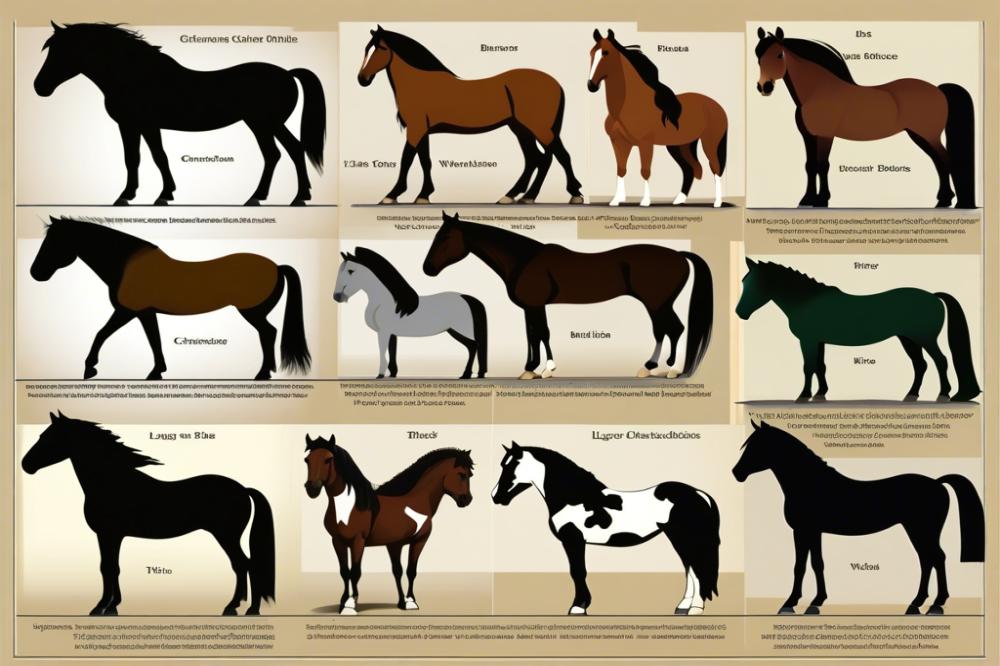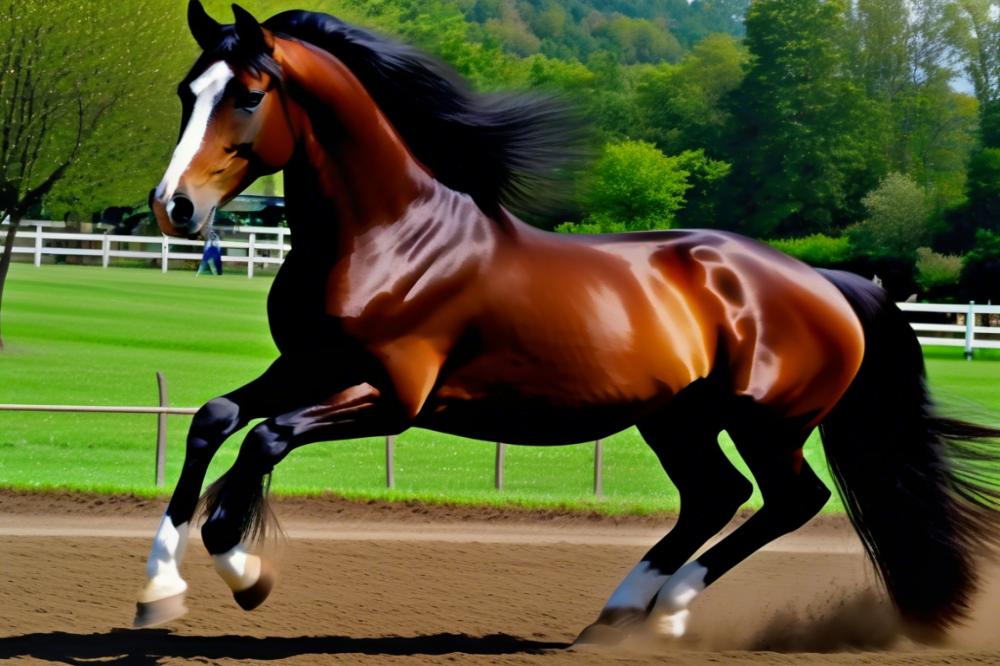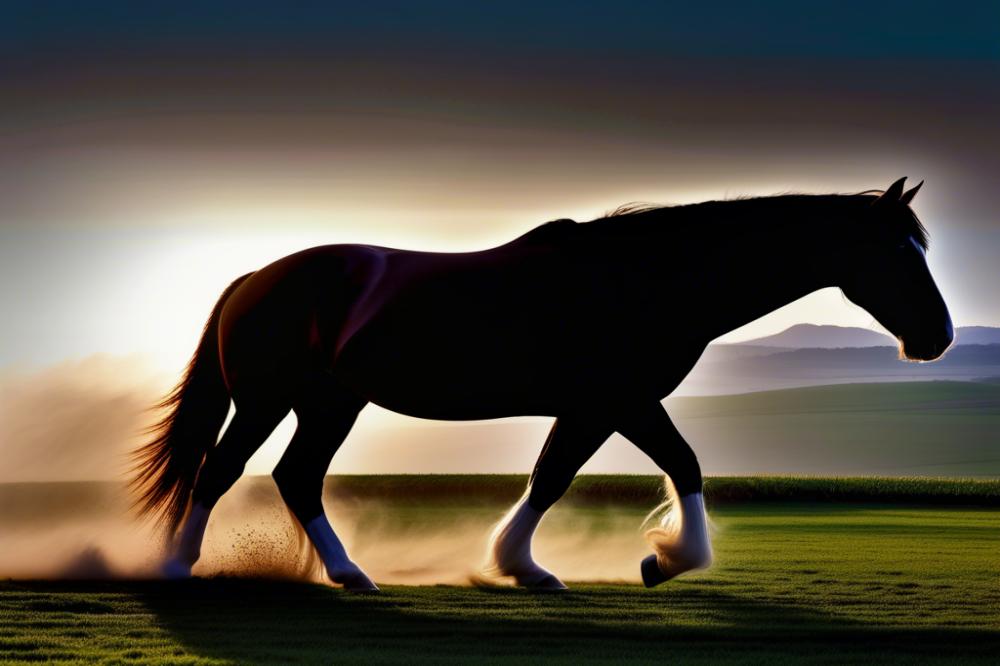Understanding Horse Breeds
When we talk about horses, we’re diving into a rich world filled with diverse breeds, each with its own distinct equine characteristics. Some horses are built for speed, others for strength, and some, well, they’re famous for their size! The largest horse breeds in the world truly fascinate many horse lovers and casual observers alike. You know, there’s something spectacular about a towering horse that seems to reach the clouds, isn’t there?
The Importance of Size
Size can be a crucial factor in various contexts. For example, large horses often perform different tasks than their smaller counterparts. Draft breeds may be used for heavy pulling or even in farming, while smaller breeds might excel in agility and companionship. One interesting aspect to ponder is how size traits influence horse care. A tall horse might require special attention regarding stabling, feeding, and training! Just imagine trying to find a saddle that fits! It can be quite the challenge!
Purpose of This Article
This journey through horse breed information aims to enlighten you about the giants of the equine world. Our purpose is not only to inform but also to entertain a bit along the way. Picture this: when a curious kid asks, “Can a horse and cow breed?” as they watch their neighbor’s farm, wouldn’t it be great to have some fun facts to share? You might even find yourself chuckling at the thought, but that curiosity leads to learning—so here we go!
A Battle of Breeds
Speaking of interesting comparisons, the discussion of “akhal teke vs arabian” often sparks lively debates among enthusiasts. These breeds showcase such different traits that a comparison is almost like comparing apples to oranges! Each has its own flair, but both are treasured in the world of equines.
So, saddle up, and let’s explore these magnificent large horses together! You won’t want to miss out on discovering the impressive qualities that set these breeds apart. Enjoy the journey!
Understanding Horse Measurements

Height Measurement in Hands
Horse height is measured in “hands.” This might sound odd at first. A hand is equal to four inches. To put this in perspective, a horse that’s 15 hands tall is actually 60 inches. It’s just an easy way for people to visualize size. The standard way to measure is from the ground to the top of the horse’s withers, which is the ridge between the shoulder blades. Different horse breeds vary widely in height. For example, large horses like the Clydesdale can stand over 18 hands. That’s like having a small car in your backyard!
Weight Considerations Among Large Breeds
Weight plays a big role when discussing large horses. These breeds can weigh anywhere from 1,000 to over 2,000 pounds! Imagine trying to lift a suitcase full of bricks. That’s the weight difference we’re talking about. Factors that influence weight include diet and muscle development. Large horses usually require a more substantial diet to support their bodies. This means we need to pay special attention to horse care. Proper nutrition is key, folks! Without it, even the biggest horses can struggle.
Factors Influencing Horse Size
Various factors can influence size traits in horses. Genetics is one big player. Just like you might have inherited your father’s height, so do horses. Environmental factors can also make a difference. For instance, nutrition during a horse’s early life contributes to its growth. A horse with a rich diet tends to grow taller and stronger. Additionally, the breed’s purpose matters too. Draft horses were developed for heavy work and often grow larger than lighter breeds designed for speed or agility. Each of these elements shapes the magnificent diversity we see among equine characteristics today.
Weight and height are crucial when evaluating horse breed information. Knowing these aspects helps in choosing the right horse for a specific job or hobby. So next time someone mentions their huge horse, you can picture just how big that really is!
Characteristics of the Largest Horse Breeds

Physical Traits Common Among Large Breeds
When you think of large horses, what comes to mind? Many have impressive stature and powerful builds. Notably, breeds like the Shire or Clydesdale showcase extraordinary height. A Shire horse can tower over most people, reaching up to 18 hands or more! Their muscle tone is striking, giving them a robust appearance. Size traits you’ll often spot include long legs and broad backs. Thick necks and fluffy manes also stand out. These features not only look impressive but also help with their strength. After all, these breeds were built for hard work.
Behavioral Traits and Temperament
Large horses have their own personalities. Many are gentle giants. Despite their size, they can be surprisingly calm and friendly. Some folks even describe them as teddy bears in horse form! But don’t let their gentle demeanor fool you; they can also be strong-willed. Patience is key when handling these breeds. Training may take time, but the bond formed is pretty special. Each horse demonstrates unique behaviors, so it’s important to spend time getting to know them. Their calm nature makes them great companions for riders of all skill levels.
Health Considerations Specific to Larger Horses
Caring for large horses comes with a few challenges. Their weight can sometimes lead to joint issues. Regular check-ups with veterinarians are essential to keep them healthy. Foot care is critical, too. Larger breeds can be prone to hoof problems if not managed carefully. Horse care that includes proper nutrition plays a big role in their overall health. It’s wise to monitor their diets closely, as obesity can complicate matters. Staying attentive to their health needs can make a world of difference. After all, a happy horse is a healthy one!
The Biggest Horse Breeds

Description and History of the Shire Horse
The Shire horse is one of the largest horse breeds you’ll ever meet. Originating in England, these gentle giants were once the trusty workhorses of farmers and businesses. Pulling heavy loads and plowing fields, they were essential in agriculture during the industrial era. Their massive frames and impressive strength made them popular for draught work. Interestingly, Shires can stand up to 17 hands high, which is around 68 inches! Their calm demeanor makes them great companions, too. Despite their size, they can be quite graceful. It’s like watching a big ballet when they move.
Overview of the Clydesdale Breed and Its Significance
The Clydesdale horse is a symbol of strength and beauty. Known for their distinctive markings and long feathered legs, they have charmed people for centuries. Originating from Scotland in the 18th century, these horses were bred to haul heavy goods. Today, they thrive in parades and promotional events, often associated with the famous Budweiser beer. Clydesdales can reach heights of about 18 hands. Their size traits are impressive, but their gentle nature is what really wins hearts. They truly exemplify the phrase, “big softies.”
Insight into the Belgian Draft Horse
Belgian Draft horses are another heavyweight in the equine world. These large horses can tip the scales at over 2,000 pounds! Originally from Belgium, they were bred for power and endurance. Farmers relied on them to pull plows and heavy wagons. Their robust build boasts a broad chest and strong legs. Many people appreciate their muscular physique and calm disposition. Care for these gentle giants requires attention due to their size. Regular grooming and proper feeding are crucial for making sure they thrive.
Information on the Percheron and Its Characteristics
The Percheron hails from France and brings a unique flair to the table. These horses can range from 15 to 19 hands tall. With their elegant appearance, they have both strength and agility—quite the combination! Originally, they pulled carriages and farm equipment. However, these versatile horses can adapt to various tasks. Many have a thick mane and a solid build. They’re also known for their intelligence and willingness to work, making them enjoyable for riders and caretakers alike.
Brief Mention of Other Notable Giant Breeds
Other giant equine breeds deserve a quick shout-out as well. The Suffolk Punch, with its rich history, is known for being a diligent worker. The Hanoverian, though not as big, is celebrated for its jumping ability. Each of these large horses has its own story and charm. Horse breed information can tell you tons about their unique traits and needs. If you’re ever lucky enough to meet one of these magnificent beasts, be prepared for quite the encounter!
The Role of Large Breeds in History and Culture
Historical Significance in Agriculture and Transportation
Throughout history, large horses have played a vital role in agriculture and transportation. Think about it: farmers needed strong animals to plow their fields. These giant equines were up to the job. When it came to moving heavy loads, nothing beat a sturdy draft horse. This made them essential in rural communities. They helped people grow food and transport goods to market. Without these horse breeds, daily life would have looked very different.
Use in Warfare and Heavy Hauling
When it comes to warfare, large horses were often the stars on the battlefield. Knights and cavalry relied on their strength and size during battles. Imagine trying to charge into battle without a strong steed! These majestic creatures were not just for show; they provided important support. Heavy hauling is another job where large horses excelled. They pulled cannons, artillery, and supplies, making them invaluable during conflicts. The size traits of these animals gave them an advantage in tough situations.
Cultural Representation in Art and Literature
Art and literature often depict large horses in grand ways. Many famous paintings feature these animals galloping across fields or standing majestically. Poets and authors have celebrated their beauty in countless works. In stories, they often symbolize strength and freedom. Take a moment to think about how many horse stories you’ve read. Each one shows a different side of these powerful creatures. They capture the imagination and inspire awe. Who hasn’t dreamed of riding a giant horse across an open plain?
When looking at horse breed information, you will find many examples of these incredible animals. They are more than just strong; they have a rich history that connects them deeply to our past. Sharing tales of their contributions can help us appreciate these magnificent creatures even more. So the next time you meet a large horse, remember their legacy—it’s a story worth telling!
Care and Management of Large Horse Breeds
Nutrition Needs Specific to Larger Horses
Large horses have specific dietary requirements. They need a balanced diet rich in nutrients to support their size traits. Think of it like feeding a big machine—it takes more fuel! A common approach is to offer high-quality hay and grains. Pellets can also be beneficial. These foods provide the essential fiber and energy they need. Always check the feed for proper protein and vitamin levels. Regular feeding schedules can help maintain health and prevent overeating.
Space and Housing Requirements
Adequate space is vital for big horses. They need room to move and roam. A large pasture with good fencing is perfect. Overcrowding can lead to stress and injury. Think about a horse’s comfort—it’s not just about the size of the horse but the surroundings too. Stalls should be spacious and well-ventilated. Clean bedding is important to keep them healthy. Ensure there is enough room for them to lie down comfortably and stand up without bumping their heads.
Common Health Issues and Preventative Care
With great size comes some health concerns. Large horse breeds can be prone to joint issues and laminitis. Regular check-ups with a vet can help catch troubles early. Routine hoof care is essential too. Proper trimming keeps their feet healthy and strong. You don’t want a horse to limp around because of neglect! Keeping them at a healthy weight can also prevent many problems. Remember, proper horse care includes vaccinations and deworming.
Large horses are magnificent creatures with unique needs. By paying attention to their specific requirements, we can help them thrive. After all, a happy horse is a healthy horse!
Final Thoughts on the Majestic Giants of the Equine World
As we wrap up our journey through the realm of the largest horse breeds, it’s clear that these magnificent creatures truly captivate the hearts of many. Their towering heights and impressive builds set them apart, making them not just animals, but symbols of strength and elegance. From the noble Shire to the gentle Clydesdale, each breed brings its own flair and personality to the table.
Reflecting on their significance today reveals a lot about our relationship with horses. These giants play important roles, whether in agriculture, draft work, or simply as cherished companions. For many, large breeds are a gateway into the wonderful world of equestrian activities. Think of english riding vs western riding—both styles welcome these magnificent beasts. Their size can be intimidating, yet once you form a bond, you’ll discover just how gentle their hearts can be.
Horse enthusiasts everywhere are encouraged to take a closer look at these extraordinary breeds. There’s much more to them than just their size. Understanding the horse mating process or watching them interact in their pastures can deepen that appreciation. So, if you have the chance, grab a buddy, visit these majestic giants, and observe their quirks and charms firsthand. You might just find yourself inspired by their strength and grace.
In essence, let’s celebrate these incredible animals and the joy they bring to our lives. Their unique presence can teach us lessons about loyalty, companionship, and the beauty of nature. So saddle up your curiosity and ride on the trails of discovery when it comes to large horse breeds. You may find that this journey is just as rewarding as the destination.



